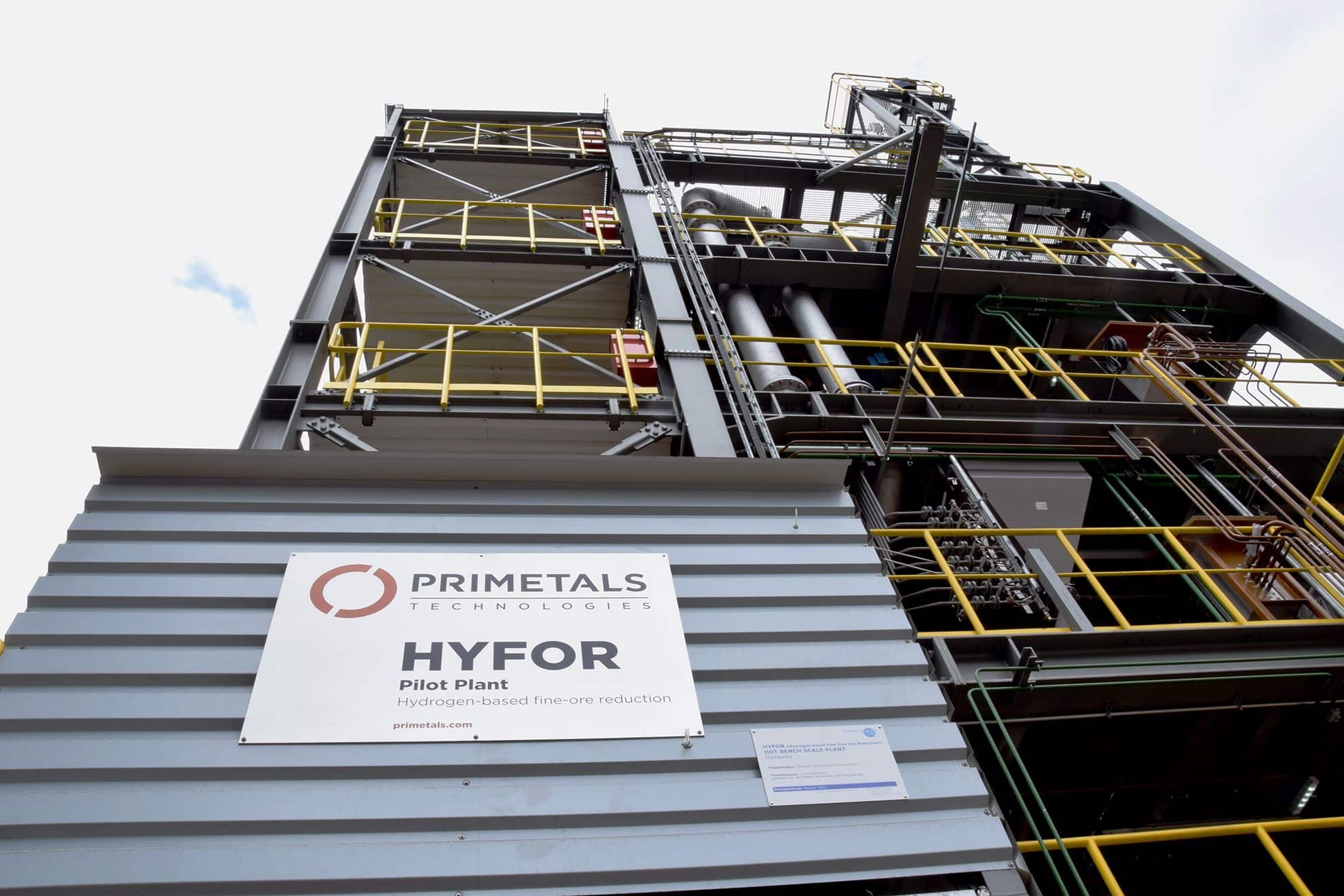In April, the Hydrogen-based fine-ore reduction (HYFOR) pilot plant developed by Primetals Technologies was commissioned at the voestalpine site in Donawitz, Austria and the first tests were successful. Tests were carried out with various iron ore concentrates and will continue to collect sufficient data. The use of 100 percent Hydrogen as a reduction agent reduces the CO2 footprint close to zero. The HYFOR pilot plant employs the world’s first direct reduction process for iron ore fines, requiring no agglomeration like sintering or pelletizing. This process means a reduction in CAPEX and OPEX, and HYFOR represents the only process worldwide capable of processing iron ore concentrate fines with 100 percent particle sizes smaller than 0.15 millimeters and a wide variety of ores, including hematite and magnetite, supplied by different customers of Primetals Technologies worldwide. The direct reduction plant will come in a modular design, allowing for a tailor-made scaling for customers for all sizes of steel plants.
The first tests were successfully executed in April and May of 2021. The scale of one test run is in the range of processing of 800 kilograms of iron ore. The HYFOR pilot plant shall be operated for at least two years in multiple campaigns to test ore types and evaluate the optimal process parameters before the next step. Assuming operations continue smoothly, a hot briquetting unit will be added to verify the Hot Briquetted Iron (HBI) quality expected from the HYFOR technology.
Primetals Technologies has developed the world’s first direct reduction process for iron ore concentrates, requiring no agglomeration, such as sintering or pelletizing. Primetals Technologies can resort to the comprehensive experience from the earlier Finmet/FINORED and FINEX development and plant installations. The new technology can be applied to all ore types (hematite and magnetite), and particle sizes up to 100 percent smaller than 0.15 millimeters. As a primary reduction agent, the new process uses 100 percent Hydrogen from renewable energy or H2-rich gases from other sources like natural gas pyrolysis or conventional steam reformers—the use of Hydrogen results in a low or even a neutral carbon footprint. The direct reduction plant will come in a modular design, making it available for all sizes of steel plants. The product is hot DRI for direct transport to the downstream melting, for example, in an electric arc furnace (EAF) or the production of merchant HBI.
The use of DRI/HBI is expected to continue to grow due to the growing demand to decarbonize the steel sector and the increasing number of EAFs in service worldwide. Currently, all available technologies require agglomeration, like pelletizing, to produce DRI or HBI. Additionally, steel producers face the reduced quality of iron ore, resulting in the need to beneficiate the iron ores. To progress to zero-carbon steel production, a process using mainly H2 is most desirable. The new HYFOR process developed by Primetals Technologies takes care of all the above considerations.
The HYFOR pilot plant consists of a preheating-oxidation unit, a gas treatment plant, and the actual reduction unit. In the preheating-oxidation unit, fine ore concentrate is heated to approx. 900 °C and fed to the reduction unit. The reduction gas, 100 percent H2, is supplied over the fence from a gas supplier. A dry dedusting system collects dust recycling to prevent emissions from the processes involved. The hot direct reduced iron (HDRI) leaves the reduction unit at a temperature of approx. 600 °C before it is cooled down and discharged from the HYFOR pilot plant. The next step will be the addition of a Hot Briquetting Testing facility to produce Hot Briquetted Iron (HBI).
The HYFOR pilot plant aims to verify this break-through process and serve as a testing facility to provide the data basis for upscaling the plant size to an industrial-scale prototype plant as the next development step.
This project is funded by the Climate and Energy Fund and is carried out under the “Energieforschung” program. For further information: www.klimafonds.gv.at, www.energieforschung.at
MORE INFORMATION
Read the full press release and access contact details and other press resources here.



